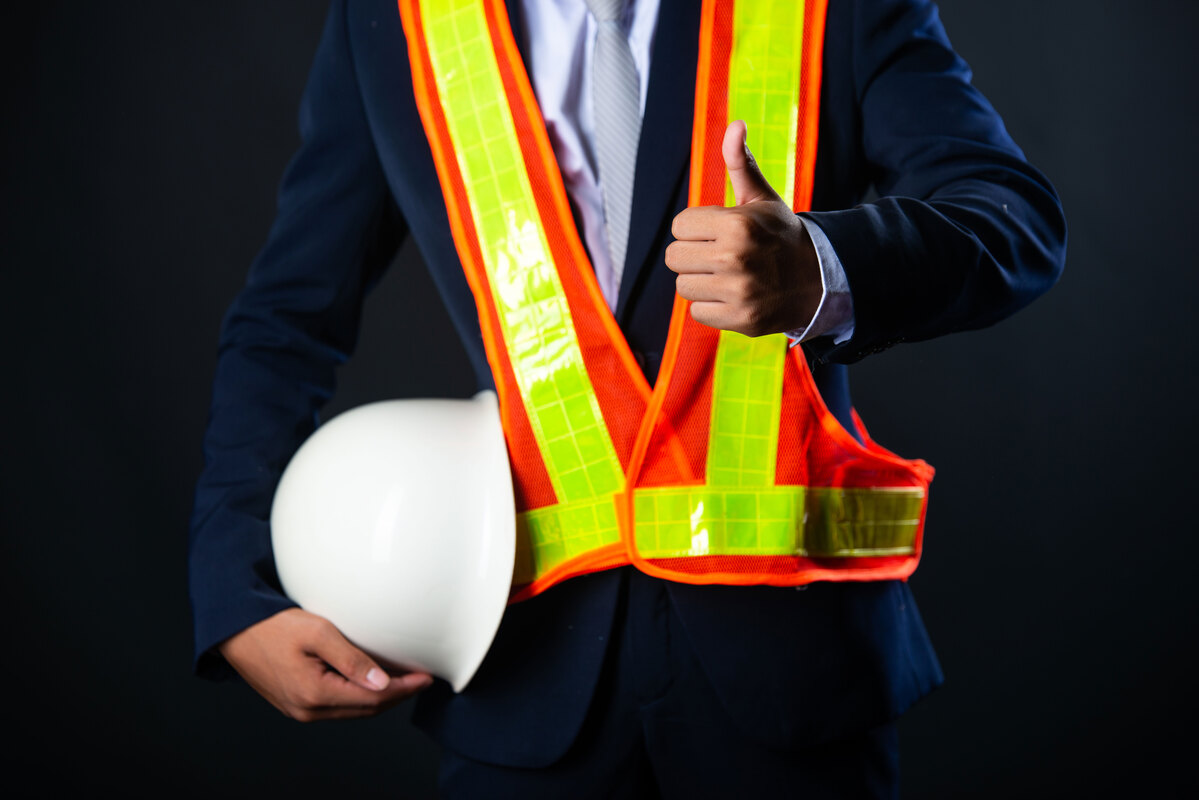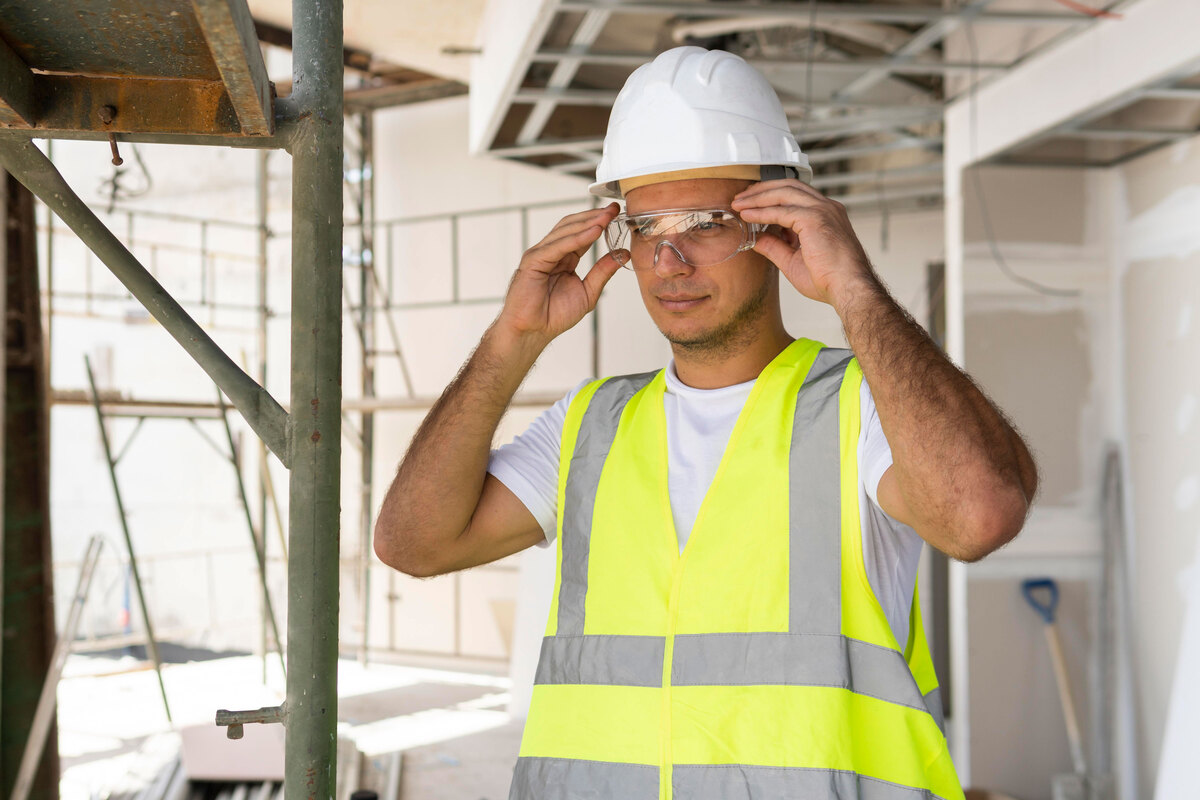Exclusive Neuroject Article: Builder’s Risk Insurance stands as a crucial safeguard within the dynamic realm of construction in 2024, offering vital protection against a spectrum of risks encountered during a project’s development. This specialized insurance coverage plays a pivotal role in shielding construction projects against unforeseen perils that could potentially disrupt or damage the worksite, materials, or structures.
At its core, Builder’s Risk Insurance serves as a financial safety net, mitigating potential losses arising from incidents such as fire, theft, vandalism, natural disasters, and various other risks that could affect a construction project. From groundbreaking to completion, this insurance coverage provides a safety cushion, offering reassurance to builders, contractors, developers, and stakeholders throughout the construction lifecycle.
One of the fundamental aspects of Builder’s Risk Insurance lies in its ability to cover not just the physical structure being built but also the materials, fixtures, and equipment involved in the construction process. This coverage extends to temporary structures and expenses incurred due to delays caused by covered perils.
Builder’s Risk Insurance policies are typically project-specific and can vary in their coverage limits, durations, and exclusions based on the nature and scale of the construction project. Understanding the nuances of this insurance coverage is vital for project managers, contractors, and stakeholders to ensure adequate protection against potential financial setbacks and unforeseen challenges.
Table of Contents
What is Builder’s Risk Insurance?
Builder’s risk insurance, also termed course of construction insurance, falls under property insurance and shields against damage or loss occurring to a building during construction or renovation. It commonly encompasses risks like theft, vandalism, fire, wind damage, and similar perils.
Typically procured by builders, contractors, or property owners overseeing a project, this insurance is vital due to the inherent uncertainties in construction work. Despite meticulous planning and execution, accidents are plausible. Hence, a builder’s risk insurance aims to safeguard the construction process, assisting in covering repair or replacement expenses in case of damage or loss.
What does a Builder’s Risk Insurance Cover?
Builders’ risk insurance is adaptable to cater to specific construction risks. Though policy details may vary among insurance providers, the typical coverages of builders’ risk insurance encompass:
Buildings or Structures Under Construction
During construction, buildings are more susceptible to weather-related events, vandalism, and accidents. Parts of the building usually shielded may be at risk until the project’s completion.
Materials and Supplies
Construction sites face unique exposure risks as materials purchased are yet to become permanent components of the building. These materials are often stored in temporary structures, trailers, or open areas, making them vulnerable to theft and environmental damage.
Property in Transit
Transporting building materials or equipment involves the risk of auto accidents. Such accidents during transit can be costly, especially considering the higher value of the equipment compared to the vehicle transporting it.
Debris Removal
Besides direct property damage, the costs associated with debris removal from catastrophic events, like fire or windstorms, can range from $10,000 to over $100,000, an aspect often overlooked in building construction risks.
Soft Costs
Construction damage causing delays incurs additional expenses such as increased interest on financing, real estate taxes, architectural fees, and permit costs, potentially exceeding the project’s budget over time.
Business Income and/or Rental Value
Construction projects adhere to timelines and business plans aiming to recover construction costs. Damage leading to substantial delays in project completion, even by a year, can significantly impact income generation from the intended store, warehouse, or rental property.
What it doesn’t Cover?
Policy exclusions detail what builder’s risk insurance doesn’t cover, with liability being a significant aspect typically requiring a separate policy for contractors. Understanding what other protections are absent from builder’s risk contracts is crucial to avoid financial setbacks:
- Deterioration due to regular use: Damage resulting from typical wear and tear during construction won’t receive coverage.
- Employee theft: Loss caused by internal theft of equipment or materials isn’t included in builder’s risk insurance but might be covered by other business insurance types.
- Product design and manufacturing flaws: Insurance for defects in finished products used in construction requires a separate commercial insurance policy.
- Equipment breakdown: Costs for repairing malfunctioning equipment during construction are not covered under the builder’s risk insurance.

Importance of Builder’s Risk Insurance
Builder’s risk insurance shields both the structure under construction or renovation and the on-site materials, fixtures, and equipment. It offers protection against property damage caused by various perils like fire, windstorms, lightning, theft, vandalism, and specific natural disasters.
Unpredictable weather conditions, often encountered during construction, make builder’s risk insurance essential. In regions like Colorado, where heavy snowfall, wildfires, and hailstorms are frequent, having adequate coverage becomes even more critical. The absence of this coverage could expose contractors and property owners to substantial financial risks and potential project delays.
This insurance not only safeguards against property damage but also covers expenses linked to repairing or replacing damaged materials, fixtures, or equipment. This coverage ensures the seamless continuation of the construction project, preventing additional costs that might strain the project’s budget.
What is a Builder Risk Insurance Policy?
Builder’s risk insurance is a specialized coverage that safeguards buildings and structures throughout the construction or renovation process. Unlike standard commercial property insurance, this policy extends beyond an already-existing structure, providing protection from the project’s inception, starting from groundbreaking and spanning until the building’s completion.
Construction projects entail specific risks that differ from established buildings. These risks encompass potential theft and heightened susceptibility to wind damage. Builder’s risk insurance serves as a protective shield against these unique exposures, offering coverage during the vulnerable construction phase.
The Four Sections of a Builders Risk Policy
Each construction endeavor holds its distinct traits, making nearly all aspects of a builder’s risk policy adjustable. It’s plausible to tailor custom insurance coverages, should you be open to paying extra premiums, underscoring the importance of understanding what requests are viable and advisable. We’ll delve into the four segments of your policy or quotation, outlining potential responses to various scenarios:
- Items Covered
- Excluded Items
- Covered Risks
- Uncovered Risks
What Types of Builders Risk Policies are Available?
Single project: Tailored for contractors or property owners overseeing a singular new construction, renovation, or installation project at any given time.
Reporting form: Geared towards contractors engaged in multiple residential and commercial construction projects. Simplifies coverage matters and claims across various projects by providing a centralized reference point. This policy permits the addition and removal of projects as they commence or conclude, with coverage initiated immediately upon project inclusion in the reporting form.
Blanket deposit premium: Suited for contractors handling an average of 25 or more new construction projects annually. Eliminates the need to report individual projects monthly; instead, an estimated number of buildings to be constructed determines the deposit premium. At the year’s end, policy settlement aligns with the actual number of projects undertaken.
Blanket installation: An extensive policy designed for trade contractors involved in valuable residential or commercial installations.
Builder’s Risk Policy Claim Checklist
Assessing if property damage at a project site falls under insurance coverage can be challenging. The initial hurdle involves identifying the applicable insurance policy, which often entails a laborious and perplexing review process. The subsequent challenge lies in determining the extent of property damage and associated losses, including the methodology for calculating delay costs.
In instances of property damage during construction, the primary recourse is typically the builder’s risk insurance policy, offering extensive coverage for property damage losses. It’s common to enhance coverage by adding delay-in-completion coverage through an endorsement, which caters to delay costs and related expenses stemming from the covered property damage.
Navigating the documentation of a claim and collaborating with an insurance adjuster while ensuring project continuity can present difficulties. Here are some pointers to aid in preparing a builder’s risk claim and optimizing the recovery process:
- Read the Insurance Policy: This should always be the starting point when seeking insurance coverage for a loss, but the importance of this step is even greater with builder’s risk policies because these policies can vary greatly. Generally, the policy outlines what types of costs are covered. Delay-in-completion coverage is commonly added by endorsement to a builder’s risk policy, and the endorsement usually will specify what soft costs are covered and not covered.
Typically, delay-in-completion coverage includes reimbursement for interest expenses on construction loans, the costs for additional permits and licensing, project administration costs, and additional equipment rental expenses, among other things. Knowing upfront what is covered and what is not covered will help focus time and resources on maximizing recovery.
- Establish a Claims Handling Team: Multiple individuals are typically involved in the claims process, such as the project manager, contractors, subcontractors, and claims consultants, among others. Often, these individuals have diverse responsibilities, and handling insurance claims isn’t a routine part of their roles. To ensure efficient completion of tasks and keep the claims process on course, assigning a specific team responsible for documenting the claim and clearly defining each member’s responsibilities is essential.
Early engagement of legal counsel can be beneficial. Coverage counsel, in particular, can lead communication with the insurance carrier and offer guidance on internal email communication. They can advise on the suitability of sending litigation hold notices to preserve documents. It’s crucial to avoid emails expressing opinions on damages and coverage since these communications might be used as evidence in potential litigation.
While the claims handling team focuses on information collection, documenting losses, and interacting with the insurance carrier, the remaining construction team can concentrate on the project schedule. This division of responsibilities ensures a smoother claims process without compromising project progress.

- Establish Separate Accounting Codes to Track Losses: It’s crucial to distinguish between regular project expenses and losses stemming from the covered property damage. Often, the workers present at the project site are the same individuals handling repairs. Using distinct accounting codes simplifies the identification of covered losses and prevents detailed questioning from insurance adjusters about whether specific losses constitute normal project expenses.
Additionally, many builders’ risk policies offer reimbursement for internal claim documentation and loss calculations. Hence, it’s beneficial to track these costs separately. Establishing separate accounting codes saves time and minimizes the challenges associated with recalling and substantiating costs linked to the claim months or years later.
- Top of Form
- Be Vigilant about Collecting and Organizing Documents: Insurance adjusters typically demand extensive documentation when assessing a builder’s risk claim, often seen as the most challenging aspect. However, it doesn’t need to be overwhelming. In many cases, the general contractor is likely already gathering most of the essential documents required to substantiate a claim.
The necessary documentation often includes daily reports, meeting minutes, site inspection and progress photos, payment applications, and iterations of the project schedule. Insurance adjusters scrutinize these documents to gauge the project’s status at the time of the loss, its trajectory, and the impact of the loss on the project schedule.
To streamline the process and work efficiently, it might be beneficial to inquire with the insurance adjuster about the specific documents needed and how they prefer the information organized. Establishing a systematic filing system for claim documents is crucial.
Moreover, maintaining updated and comprehensive logs of these documents ensures a clear record of the information provided to the insurance carrier to substantiate the claim.
- Document All Communications with the Insurance Carrier and Adjuster: It is easy to lose track of what documents and information you provide to the insurance carrier. The insurance carrier’s financial consultant may call to ask specific questions about your delayed claim and then forget to share that information with the adjuster.
To avoid providing answers to repetitive questions—or worse, contradicting yourself—it is critical to document all communications with the insurance carrier and its team. That means sending “summary emails” after phone calls or in-person meetings that describe what happened, including any requests made by the insurance carrier and any information or documents you provided.

Key Components of Builder’s Risk Insurance
Builder’s risk insurance comprises several elements that define coverage extent and policy terms. Grasping these components is vital for both project owners and contractors to ensure sufficient protection throughout construction.
- Specified Risks: The policy delineates covered perils like fire, theft, vandalism, and certain natural disasters. This clarity enables a mutual understanding of the mitigated risks under the insurance policy.
- Policy Duration: Coverage spans from project inception to completion or property occupancy. This timeline safeguards the project during construction, assuring all involved parties.
- Reimbursement Value: The policy compensates for repair or replacement at the actual cost, excluding depreciation. This facet ensures adequate compensation, enabling the restoration of damaged property without additional financial strain.
- Deductibles: The amount the policyholder must pay before coverage applies. Deductibles encourage responsible risk management, aligning interests between insured parties and insurers while discouraging unnecessary claims.
- Exclusions: Certain risks, like earthquakes or employee theft, may not be covered. Thoroughly reviewing exclusions helps project owners and contractors identify potential coverage gaps and take necessary risk-mitigating measures.
- Additional Coverage: Optional coverages may address specific risks not covered in the standard policy. These extra provisions allow tailoring the policy to the project’s unique needs, ensuring comprehensive protection against diverse risks.
Understanding these components empowers project stakeholders to make informed choices when selecting an insurance provider and policy. This knowledge aids in choosing suitable coverage aligned with the project’s requirements and risk tolerance.
What Types of Projects Can Builders Risk Insurance Cover?
Builders’ risk policies typically cover three project types: construction, renovation, and installation.
- New Construction: This pertains to building a structure entirely from the ground up, encompassing both residential (houses, apartments, duplexes) and commercial (office buildings, retail stores, restaurants) construction.
- Installation: Projects involving adding a single fixture or feature to a space. These projects generally have a more restricted scope and timeframe compared to remodeling endeavors.
- Remodeling: Involves modifications to an existing building or space that surpasses simple installations. Any changes to the building’s interior or floor plan fall under remodeling. For instance, a common example of commercial remodeling includes a growing company expanding into an adjacent free space.
Who is Builders Risk Insurance for?
Builders’ risk insurance holds specificity in its ability to provide coverage for various parties involved in the construction project.
Ensuring coverage for all stakeholders involved in and invested in the project is crucial for safeguarding against potential damages throughout the construction period. This includes:
- General Contractors: Typically, the general contractor is listed first on the policy since they oversee project progress and manage the business conducting the project. Consequently, they often shoulder the most significant risk among the involved parties.
- Developers/Property Owners: Property owners or developers rank second in terms of assumed risk. Sometimes, the developer is listed first on the policy, a decision commonly made in consultation with the general contractor.
- Subcontractors: All subcontractors contributing to the project, such as roofers or plumbers, should be included and covered under the policy. This ensures that the builder’s risk coverage extends protection to them against potential financial losses.
- The Bank: If the developer or property owner has secured a project funding loan from a bank, safeguarding the bank from financial loss due to accidents during construction is essential. The mortgagee, if present, is typically listed on the builder’s risk policy and granted complete coverage.
In essence, the builder’s risk insurance extends its coverage not only to the primary entities driving the construction but also to subcontractors and financial institutions involved in funding the project, ensuring comprehensive protection across various involved parties.
Identifying Potential Risks and Losses
Before investing in a builder’s risk insurance, it’s crucial to assess the potential risks and probable losses that could arise during your project.
These risks encompass various factors, including theft, weather-related damages, equipment malfunction, accidents, and more. Identifying these potential risks helps in determining the appropriate type and extent of coverage necessary for your project.
Moreover, taking proactive measures to mitigate these risks is vital. Implementing robust safety protocols and conducting regular equipment inspections are effective strategies to minimize potential hazards.
For instance, if your construction site is situated in an area prone to hurricanes or flooding, acquiring supplementary coverage specifically for these weather-related risks becomes essential.
Similarly, when utilizing costly equipment or materials, considering higher coverage limits becomes crucial to safeguard against theft or damage. Evaluating these risks comprehensively enables you to tailor your builder’s risk insurance to effectively mitigate potential losses and ensure adequate protection throughout the project’s duration.
Why do you need Builders Risk Insurance?
Builders’ risk insurance emerges due to legal principles governing new construction projects. Under common law, courts view a construction project as property once the construction or renovation work commences.
This perspective holds that whoever oversees the project assumes responsibility for any damages or injuries arising throughout the construction process.
Property owners typically invest in commercial property insurance to safeguard their buildings and work equipment. In a parallel manner, they acquire builders’ risk insurance to protect the equipment and property during the ongoing construction phase. This specific insurance coverage is essential to address the vulnerabilities and risks inherent in a project under construction or renovation.
What does Builders Risk Insurance Cost?
Understanding your construction project’s budget is crucial when determining your coverage limits. It’s important that the policy limit closely aligns with the value of the completed structure, factoring in all expenses like materials, labor, and land value.
Having a clear grasp of your construction costs also aids in estimating the cost of your builder’s risk policy. Typically, this insurance ranges between one and four percent of your construction expenses. However, the actual cost depends on factors such as the number of exclusions and your specific coverage requirements.
The projected costs of your construction project and the necessary endorsements to mitigate typical exclusions significantly influence policy expenses. The more comprehensive the coverage needed to address risks for developers and contractors, the higher the policy cost tends to be. For detailed insights, refer to our comprehensive builders’ guide.

3 Construction Innovations Changing Builders Risk Insurance Exposures
Construction resembles insurance in that its core principles remain stable, but advancements can significantly shift the industry’s direction. Emerging building techniques like 3D construction, solar panels, and cross-laminated timber are reshaping the risk exposures in builders’ insurance, creating a knowledge void for agents. With these methods gaining popularity among consumers, agents must understand how construction policies adapt to these risks. This involves examining the coverage form provided by carriers to gauge eligibility and coverage extent.
3D Construction
The global market for 3D printing in construction achieved $1.4 billion in 2021 and is projected to surge to $751 billion by 2031, marking an 87% compound annual growth rate. Unlike the conventional method of pouring concrete into molds, 3D concrete printing involves layering materials through computerized processes to create walls, floors, roofs, and various structural elements. This technique pledges faster project completion and reduced expenses compared to traditional construction methods.
From an insurance underwriting viewpoint, 3D construction lacks established government regulations and industry standards seen in other construction methods. Furthermore, proficiency in 3D design, production, and quality control is still evolving.
Builders’ risk policies are centered on safeguarding the structural integrity of ongoing construction. While collapse is typically covered, if a collapse involves a 3D component, the carrier might cover the incident but may exclude coverage for the specific component causing the collapse.
Generally, builders’ risk coverage doesn’t encompass faulty craftsmanship unless it stems from a covered cause of loss, in which case the insurer might cover the resulting damage. This principle applies similarly to components produced using Externally Developed Construction Processes (EDCP).
Agents should also be mindful that 3D processes may pose a risk of damaging previously completed construction work at the same site.
Despite significantly reducing construction timelines, 3D printing maintains the project’s original value, leaving that element of exposure unchanged.
Solar Panels
Solar power offers potential benefits such as reduced electricity costs, environmental advantages, increased property values, and lower maintenance. The usage of solar panels in both residential and commercial buildings is anticipated to continue growing.
Residential solar installations surged by 34% from 2.9 gigawatts in 2020 to 3.9 gigawatts in 2021, according to Pew Research Center. To contextualize, one gigawatt can power approximately 750,000 homes. Projections from McKinsey, influenced by the Inflation Reduction Act (IRA) of 2022, estimate a significant increase in solar capacity from 73 gigawatts in 2011 to 617 gigawatts in 2032.
From an underwriting perspective, concerns arise regarding natural disasters impacting solar panels. Events like hurricanes, tornadoes, floods, earthquakes, hail, wildfires, and heavy snow pose additional risks to properties equipped with solar panel installations.
There’s a particular concern about “micro-cracking,” a degradation in solar cells due to the silicon’s thermal expansion and contraction. Some insurance carriers might cover this issue, while others might exclude it through an endorsement. Even those that provide coverage for micro-cracking might have limitations.
Builders’ risk underwriters focus on whether solar storage batteries are part of the system and prefer installations done by licensed electricians. They assess contractors’ experience, installation location (roof or ground), grid connectivity, panel layout, system costs, and power output.
Agents should thoroughly review policy conditions when providing quotes for builders’ risk coverage for solar projects to understand the coverage’s specifics and ensure adequate protection.

Mass Timber Construction
Mass timber construction is an umbrella term referring to several manufactured wood products, including:
- cross-laminated timber
- glue-laminated timber
- dowel-laminated timber
- nail-laminated timber
- structural composite lumber.
Mass timber, constructed by affixing multiple solid wood panels together through nailing, dowelling, or gluing, stands as a robust, stable, and environmentally friendly substitute for concrete and steel, as detailed by ThinkWood.com.
An advantage, both in terms of benefit and underwriting, is that mass timber construction potentially exhibits greater resistance to fire than conventional lumber. Similar to 3D construction, mass timber components might facilitate quicker construction schedules, enhance on-site safety, and reduce construction waste, akin to an inherent fire safety system. However, the true quality distinction often surfaces only when it becomes essential.
Insurers are likely to consider the contractor’s experience with mass timber construction. Agents must distinguish which building elements involve mass timber since not all materials in a construction project are likely to fall into this category, possibly leading to a hybrid risk profile. For projects involving a combination of materials, insured individuals may receive rate concessions compared to premiums for traditional frame lumber. Despite the potential higher costs associated with mass timber components, these expenses may not necessarily reduce the rating, as premiums are calculated based on the total value upon project completion.
Additionally, mass timber can be more vulnerable to weather and moisture, potentially causing warping. Consequently, agents might notice increased water deductibles due to heightened exposure.
It appears that 3D construction, solar panels, and cross-laminated timber will continue to be prevalent. Agents, by familiarizing themselves with the underwriting considerations for these construction types, can continue aiding builders’ risk clients in finding suitable markets and contribute to a streamlined submission process.
What to Expect in Builder’s Risk Insurance Claims in 2024
As interest rates climb, persistent inflation, an ongoing tight labor market, and global uncertainties affecting energy costs and exports, the builder’s risk insurance sector anticipates grappling with more intricate claims throughout 2024. Builder’s risk insurance serves as protection against physical damage or loss during construction, bought by both project owners and contractors.
This coverage extends to various aspects including hard costs, soft costs, and time-related losses, such as income or rent loss due to physical harm. Repair expenses, categorized as hard costs, are typically more straightforward to assess, contingent on the extent of damage. However, soft costs, encompassing diverse expenses linked to project delays like additional taxes, fees for professionals (e.g., architects, engineers), permits, insurance premiums, and construction loan interests, can be more intricate. The degree of coverage for soft costs is guided by the policy’s language.
Some expenses like project administrative costs or fees for related management entities may or may not be covered. Assessing soft costs and determining lost income or rent involves establishing the appropriate delay duration, often requiring specialized analysis. Considering the current economic and trade conditions, 2024 might witness an upsurge in claims related to loan costs.
Construction delays often result in increased interest expenses, and with escalating interest rates, such expenses are rising further. Anticipated claims may include impacts like higher interest rates on variable-rate loans or increased rates on permanent financing. For instance, a four-month delay between July and November 2022 could lead to a difference of over 2 percentage points at prime rates. Moreover, this new landscape might complicate refinancing arrangements, potentially causing additional delays in construction completion or indirect effects on project financing.

Future of Builder’s Risk Insurance
The outlook for Builder’s Risk Insurance is poised for evolution and expansion, driven by various factors reshaping the construction landscape. As we look ahead, several trends and developments are anticipated to influence the trajectory of this specialized insurance coverage.
Technology Integration: One significant trend shaping the future of Builder’s Risk Insurance is the integration of advanced technologies. Innovations like drones, Building Information Modeling (BIM), Internet of Things (IoT) devices, and real-time monitoring systems are revolutionizing how construction sites are managed and risks are assessed. These technologies enable proactive risk mitigation, enhanced data collection, and better risk analysis, allowing insurers to offer more precise and tailored coverage.
Sustainability Emphasis: The construction industry is increasingly focusing on sustainable practices. Builder’s Risk Insurance is likely to adapt to this trend by incorporating coverage options that incentivize green building initiatives and sustainable construction materials. Insurers might provide incentives or discounts for projects that adhere to sustainable standards, promoting eco-friendly practices while mitigating risks associated with traditional construction methods.
Resilience Against Climate Risks: With the escalating impact of climate change, the construction sector faces heightened risks from extreme weather events. Builder’s Risk Insurance will likely evolve to address these challenges by providing comprehensive coverage against weather-related damages. Insurers may offer specialized coverage for floods, windstorms, and other climate-related risks, helping construction projects better prepare and recover from these events.
Pandemic Preparedness: The COVID-19 pandemic highlighted the need for insurance coverage tailored to unforeseen disruptions. Builder’s Risk Insurance might adapt by incorporating clauses or endorsements that account for business interruptions caused by pandemics or other health crises. This could include coverage for delays due to supply chain disruptions, labor shortages, or project shutdowns resulting from health emergencies.
Market Competition and Customization: As the demand for Builder’s Risk Insurance grows, insurers are likely to compete by offering more customized policies. Companies may differentiate themselves by providing specialized coverage options tailored to specific construction project types or sizes. This customization could range from coverage limits, deductibles, policy durations, and additional endorsements, allowing project stakeholders to select policies aligning precisely with their needs.
Regulatory Changes: Evolving regulations and building codes play a pivotal role in shaping insurance requirements within the construction industry. As codes change to address safety and environmental concerns, Builder’s Risk Insurance will likely adjust to ensure compliance and adequate coverage. Insurers may need to stay nimble and adaptable to align policies with updated regulations.
The future of Builder’s Risk Insurance is marked by adaptation and innovation. The integration of technology, emphasis on sustainability, resilience against climate risks, preparedness for pandemics, customization options, and responsiveness to regulatory changes are expected to redefine and enhance this specialized insurance coverage. As the construction industry evolves, Builder’s Risk Insurance will continue to evolve in tandem, offering tailored and comprehensive coverage to safeguard construction projects against an ever-changing array of risks.

Conclusion
Builder’s Risk Insurance serves as an indispensable safety net, offering crucial protection against a myriad of risks prevalent in the construction industry. Throughout the lifecycle of a construction project, this specialized insurance coverage acts as a cornerstone, mitigating potential financial losses arising from unforeseen perils that could disrupt or impede the progress of a build.
The comprehensive nature of Builder’s Risk Insurance encompasses a wide array of risks, including but not limited to fire, theft, vandalism, natural disasters, and damages caused during the construction phase. Its coverage extends beyond the physical structure under construction, encompassing materials, equipment, temporary structures, and expenses incurred due to delays attributed to covered perils.
Project managers, contractors, developers, and stakeholders rely on the protective umbrella of Builder’s Risk Insurance to safeguard their investments and ensure the continuity of construction projects. Understanding the nuances and intricacies of this insurance coverage is paramount for prudent risk management, enabling informed decisions to mitigate potential setbacks and unforeseen challenges.
As construction methodologies evolve and risks persist in an ever-changing landscape, Builder’s Risk Insurance adapts to address new challenges and emerging perils. Its resilience lies in its flexibility to tailor coverage to specific project needs, providing a customizable safety net aligned with the scale, nature, and duration of construction projects.
In essence, this insurance coverage stands as an essential tool, empowering construction professionals to navigate uncertainties and unforeseen events confidently. Its significance in ensuring the financial stability and continuity of construction projects underscores the crucial role it plays within the construction industry, offering peace of mind and security amidst the dynamic and challenging environment of construction endeavors.
Suggested article to read:
Types of Risk Management Strategies
How to Make a Risk Management Plan
Resources: Stoel | Mynewmarkets | Jdsupra | Mynewmarkets | Pureriskadvisors | Landesblosch | Contractorsliability | Roguerisk | Usassure | Bellkenins | Procore
For all the pictures: Freepik





